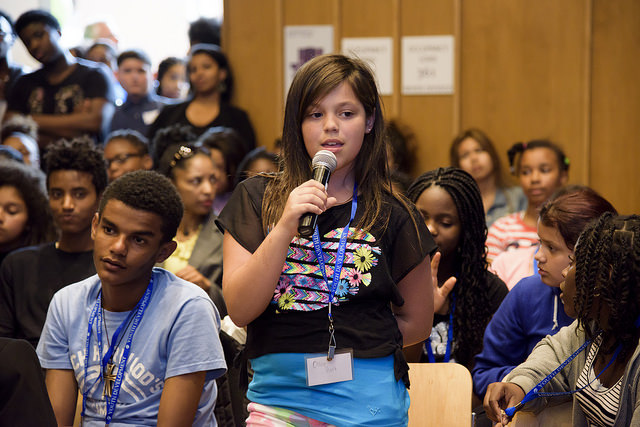 Middle School Character and Leadership Education
Middle School Character and Leadership Education
Yes, this curriculum was initially developed for and taught to high school students. At the same time, most high schools teach this to freshmen. The middle school principals that I meet say, “If we’re so worried about freshmen transition, why are we waiting until 9th grade to address this issue? Why not hit them with this before they get to high school?” It is difficult to argue with this logic, so I normally send the principal the curriculum and textbook to review. In almost every case, the principal feels that it is a tremendous fit. There are now hundreds of middle schools that successfully implement this program.
Leadership Course
Just as in high schools, middle schools offer this as an elective leadership course. It is suggested that late middle school be targeted for this class.
English Classes (ELA & ELD)
While the Character Development & Leadership program has traditionally been used in elective leadership classes, the current trend in 2012-2013 is to implement this curriculum in English, remedial writing or "English as Second Language" courses. The main reason is the alignment with the national common core standards. Even if you choose not to use this in an English course, we recommend this curriculum as another avenue to improve reading and writing test scores and to meet new common core standards for ELA and ELD.
Exploratory
A unique approach to middle school is something called exploratory, which is taught in short six-week sequenced intervals. For instance, 6th grade students take Life Skills, 7th graders take Character Education and 8th graders take Career Exploration. This curriculum is provided in short doses, yet a consistent theme is revisited during each year. I really like this concept.
Advisory Period
Using this curriculum in this capacity provides middle schools with an opportunity to weave a consistent thread running through the school. I do believe that it is best to divide the curriculum by lesson plans instead of "weeks" to address the academic and maturity level of each grade. For example, 6th graders receive the basic skills, quotes and definitions, 7th graders watch the video clips and do the ethical dilemmas, 8th graders read the Role Models textbook and participate in the lecture format.
Order Classroom Curriculum
Traditional Classroom Curriculum
Includes teacher binders, textbooks and workbooks
Order Traditional Curriculum